Built more than 1800 years ago, the magnificent Pantheon still stands as a reminder of the great Roman Empire. The name “Pantheon” refers to the building’s original function as a temple for all gods.
With its thick brick wall and large marble columns, the Pantheon makes an immediate impression on visitors. But the most remarkable part of the building is its dome. It was the largest dome in the world until 1436, a _____________. At the top of the dome is a large opening, the oculus, b __________. The front portico has three rows of columns: the first row has eight columns c _________. A huge bronze door gives access to the cylindrical building.
The portico’s sixteen huge columns were extracted in Egypt. They were transported all the way to Rome using barges and vessels. The columns, each one with a diameter of 1.5 meters, support a pediment with an inscription attributing the Pantheon to Marcus Agrippa d ____________.
The most important problem e __________ of the Pantheon was the massive weight of the large dome. In order to support it without proper reinforcement as is common today, the thickness of the walls was gradually decreased f ___________ respectively during its construction. As a result, the Pantheon still boasts the world’s largest unreinforced solid concrete dome.
1. which was the only source of light
2. while the other two have four each
3. when the Pantheon was constructed
4. even though it was built by Hadrian
5. as the height of the building increased
6. when the Florence Cathedral was constructed
7. that the Romans faced during the construction
Built more than 1800 years ago, the magnificent Pantheon still stands as a reminder of the great Roman Empire. The name “Pantheon” refers to the building’s original function as a temple for all gods.
With its thick brick wall and large marble columns, the Pantheon makes an immediate impression on visitors. But the most remarkable part of the building is its dome. It was the largest dome in the world until 1436, a _____________. At the top of the dome is a large opening, the oculus, b __________. The front portico has three rows of columns: the first row has eight columns c _________. A huge bronze door gives access to the cylindrical building.
The portico’s sixteen huge columns were extracted in Egypt. They were transported all the way to Rome using barges and vessels. The columns, each one with a diameter of 1.5 meters, support a pediment with an inscription attributing the Pantheon to Marcus Agrippa d ____________.
The most important problem e __________ of the Pantheon was the massive weight of the large dome. In order to support it without proper reinforcement as is common today, the thickness of the walls was gradually decreased f ___________ respectively during its construction. As a result, the Pantheon still boasts the world’s largest unreinforced solid concrete dome.
1. which was the only source of light
2. while the other two have four each
3. when the Pantheon was constructed
4. even though it was built by Hadrian
5. as the height of the building increased
6. when the Florence Cathedral was constructed
7. that the Romans faced during the construction
10
Monday
Oct 2011
All my guidebooks tell me that the Pantheon is one of the key buildings of the ancient world.
Built more than 1800 years ago, the magnificent Pantheon building in Rome still stands as a reminder of the great Roman empire.
With its thick brick walls and large marble columns, the Pantheon makes an immediate impression on visitors. But for its time (AD 125) the most remarkable part of the building is the more than 43 metre high dome. It was the largest dome in the world until 1436 when the Florence Cathedral was constructed.
The huge concrete dome 143ft across with its central oculus open to the sky was a major engineering feat in its day.
At the top of the dome, the large opening, the oculus, is the only source of light.
The front portico has three rows of 8 columns, each one with a diameter of 1.5m. A huge bronze door gives access to the cylindrical building. Its diameter equals the interior height of 43.3m.
It became a Christian church in AD 608. Raphael and the first two kings of Modern Italy are buried here.
Interior
Originally a temple for all pagan gods, the temple was converted into a church in 609AD. The Pantheon now contains the tombs of the famous artist Raphael and of several Italian Kings. Its ecclasiastic interior design contrast with the temple’s structural design, but the marble floor – which features a design consisting of a series of geometric patterns – is still the ancient Roman original.
Before the current Pantheon was built, two other buildings occupied the same site. The first one, a traditional rectilinear, T-shaped structure was built in 27 BC by the emperor Marcus Agrippa, son-in-law of the emperor Augustus. The temple was dedicated to the gods Mars and Venus. It burned down in AD 80 but was rebuilt by emperor Domitian. In AD 110 the building was struck by lightning and burned down again. In AD 118 emperor Hadrian commissioned for the Pantheon to be rebuilt but with a totally different, circular design. This time the Pantheon building would last much longer.
The Dome
The most important problem the Romans faced during the construction of the Pantheon was the massive weight of the large dome. In order to support it without proper reinforcement as it is common today, the thickness of the walls gradually decreased as the height increased. The Romans also used a different type of concrete for the dome as for the walls. At the base very thick (6m, 20ft) walls were constructed. At the top of the dome, a lighter type of concrete was used and near the oculus it is only 7.5 ft or 2.3 m thick. The use of coffers in the ceiling and the opening at the top also helped reduce the weight of the dome.
The huge, 60 tonne weighing columns used for the portico were quarried in Egypt. They were transported all the way to Rome using barges and vessels.
The columns support a pediment with an inscription attributing the Pantheon to Marcus Agrippa even though it was built by Hadrian.
The Pantheon borders the Piazza della Rotonda, a rectangular square with a central fountain and obelisk. The often crowded square is situated in the historic center of Rome, not far from the Piazza Navone, one of Rome’s most beautiful squares.
Built more than 1800 years ago, the magnificent Pantheon building still stands as a reminder of the great Roman empire.
With its thick brick walls and large marble columns, the Pantheon makes an immediate impression on visitors. At the time the building was built, the most remarkable part of the it was the 43 meters high dome. It was the largest dome in the world until 1436 when Florence Cathedral was constructed.
At the top of the dome is a large opening, the oculus, which was the only source of light.
The front portico has three rows of 8 columns, each one with a diameter of 1.5m. A huge bronze door gives access to the cylindrical building.
Interior
Originally it was a temple for all pagan gods, converted into a church in 609. The Pantheon now contains the tombs of the famous artist Raphael and of several Italian Kings. Its ecclesiastic interior design contrast with the temple’s structural design, but the marble floor — which features a design consisting of a series of geometric patterns — is still the ancient Roman original.
The Pantheon borders the Piazza della Rotonda, a rectangular square with a central fountain and obelisk. The often crowded square is situated in the historic center of Rome, not far from the Piazza Navone, one of Rome’s most beautiful squares.
Предмет: Английский язык,
автор: Bbbbbssss
Ответы
Автор ответа: ZnatokOtBoga
7
a. 6
b. 1
c. 2
d. 4
e. 7
f. 5
…
Предыдущий вопрос
Следующий вопрос
Интересные вопросы
Предмет: Математика,
автор: serzhbalandin96
решите задачу: Машина в первый день проехала 270 км, что составило 30% всего пути. Какой путь предстояло проехать машине?
3 года назад
Предмет: Химия,
автор: vladmishenko2008
Встановіть відповідність між лівою та правою частинами рівнянь реакцій.
Mg(OH)2 + 2HCl — Вибрати…
>
Mg + 2HCl —
у Вибрати…
MgCO3 + 2HCI →
магній хлорид + вода
<>
MgO + 2HCl —
>
магній хлорид + вода +
карбон(ІV) оксид
магній хлорид + 2 води
магній хлорид + водень
3 года назад
Предмет: Биология,
автор: dimono8
Наслідки ускладнення будови головного мозку?
3 года назад
Предмет: Алгебра,
автор: viktorvetoha
Знайдіть кут між бісектрисами суміжних кутів
5 лет назад
Предмет: Английский язык,
автор: krasnoperka
Срочно!!
Помогите найти все слава! Заранее спасибо.
5 лет назад
Built more than 1800 years ago, the magnificent Pantheon still stands as a reminder of the great Roman Empire. The name Pantheon refers to the building’s original function as a temple for all the gods.
Pantheon
The oculus
With its thick brick walls and large marble columns, the Pantheon makes an immediate impression on visitors. But the most remarkable part of the building is the more than forty-three meter high dome. It was the largest dome in the world until 1436 when the Florence Cathedral was constructed.
At the top of the dome is a large opening, the oculus, which was the only source of light. The front portico has three rows of columns; the first row has eight columns, while the other two have four each. A huge bronze door gives access to the cylindrical building. Its diameter equals the interior height of 43.3 meters.
Earlier Temples
Before the current Pantheon was built, two other buildings occupied the same site. The first one, a traditional rectilinear, T-shaped structure, was built in 27-25 BC by general Marcus Agrippa, son-in-law of Emperor Augustus. The temple was dedicated to the gods Mars and Venus. It burned down in 80 AD, but was rebuilt by Emperor Domitian. In 110 AD, the building was struck by lightning and burned down again.
In 118 AD Emperor Hadrian ordered for the Pantheon to be rebuilt again but this time in a totally different, circular design. It was completed seven years later, in 125 AD. This latest version of the Pantheon would stand the test of time much better: it is still standing almost intact today.
The Building
The Portico
Portico
The portico’s sixteen huge, sixty tons weighing columns were quarried in Egypt. They were transported all the way to Rome using barges and vessels. The columns, each one with a diameter of 1.5 meters, support a pediment with an inscription attributing the Pantheon to Marcus Agrippa even though it was built by Hadrian. In Ancient Times, the pediment was decorated with statuary in gilt bronze. These were removed on the orders of Pope Urban VIII to create the baldachin in the St. Peter’s Basilica.
The Dome
The most important problem the Romans faced during the construction of the Pantheon was the massive weight of the large dome.
View from
Piazza della Minerva
In order to support it without proper reinforcement, as is common today, the thickness of the walls was gradually decreased as the height increased. The Romans also used a different type of concrete for the dome than for the walls. At the base, very thick (6 m. / 20 ft.) walls were constructed. At the top of the dome, a lighter type of concrete was used and near the oculus it is only 7.5 feet or 2.3 meters thick. The use of coffers in the ceiling and the opening at the top also helped reduce the weight of the dome.
The Interior
Interior
Originally a temple for all pagan gods, the temple was converted into a church in 609. The Pantheon now contains the tombs of the famous artist Raphael and of several Italian kings. Its ecclesiastical interior design contrast with the temple’s structural design, but the marble floor – which features a design consisting of a series of geometric patterns – is still the ancient Roman original.
Piazza della Rotonda
Piazza della Rotonda
The Pantheon borders the Piazza della Rotonda, a rectangular square with at its center an eighteenth-century fountain crowned with an obelisk. The constantly crowded square is situated in the historic center of Rome, not far from the Piazza Navona, one of Rome’s most beautiful squares.
- Next: Vatican Museums
- More Rome Ancient Sights
Built more than 1800 years ago, the magnificent Pantheon building still stands as a reminder of the great Roman empire.
The building’s dome, more than 43 meters high is most impressive. It was the largest dome in the world until 1436 when the Florence Cathedral was constructed. At the top of the dome is a large opening, the oculus, which was the only source of light.
The front portico has three rows of 8 columns, each one with a diameter of 1.5m. A huge bronze door gives access to the cylindrical building. Its diameter equals the interior height of 43,3m.
Originally a temple for all pagan gods, the temple was converted into a church in 609. The Pantheon contains the tombs of Rafael and of several Italian Kings.
Before the current Pantheon was built, two other buildings occupied the same site. The first one, a traditional rectilinear, T-shaped structure was buildt in 27BC by the emperor Marcus Agrippa, son-in-law of the emperor Augustus. The temple was dedicated to the gods Mars and Venus. It burned in 80 AD but was rebuilt by emperor Domitian. In 110 AD the building was struck by lightning and burned again. In 118 AD emperor Hadrian commissioned for the Pantheon to be rebuilt but with a totally different design. This time the Pantheon building would last much longer.
The huge, 60 tons weighing columns used for the portico were quarried in Egypt. They were transported all the way to Rome using barges and vessels. The columns support a pediment with an inscription attributing the Pantheon to Marcus Agrippa even though it was built by Hadrian.
The Pantheon borders the Piazza della Rotonda, a rectangular square with a central fountain. It is situated in the historic center of Rome, not far from the Piazza Navona.
Hotels in the neighboarood
HOTEL SOLE AL PANTEHON
OUR HOTELS IN ROME
 ALBERGO DEL SOLE AL PANTHEON
ALBERGO DEL SOLE AL PANTHEON
Rating:****
Location:CITY CENTRE
An historic Rome Hotel, one of the oldest in the world, located inside city center in front of Pantheon.
 CARDINAL HOTEL SAINT PETER
CARDINAL HOTEL SAINT PETER
Rating:****
Location:AURELIA VATICAN
An elegant four star hotel in Rome, located in the center of the Capital City, very close to Piazza San Pietro, provided on 130 rooms an suites.
 KOLBE HOTEL ROME
KOLBE HOTEL ROME
Rating:****
Location:CENTER ROMAN FORUM
Facing the Forum Romano and Palatino Hill, Kolbe Hotel Rome has 71 Rooms & Suites lovely furnished and well supplied with all comforts
 ROUGE ET NOIR HOTEL & CONFERENCE CENTER
ROUGE ET NOIR HOTEL & CONFERENCE CENTER
Rating:****
Location:NOMENTANA
Located on a hill and surrounded by a luxuriant park, the Hotel is in a favourable position between the Via Nomentana and the Via Tiburtina. Just the ideal venue for business, meetings or vacation. The lovely outdoor swimming pool is open from June to September.
 SUNRISE HOTEL
SUNRISE HOTEL
Rating:****
Location:NOMENTANA DOWNTOWN DIRECTION
In the residential area of Montesacro and just a few minutes away from the city centre, a Rome top clas elegant hotel.
 PINEWOOD HOTEL ROME
PINEWOOD HOTEL ROME
Rating:****
Location:AURELIA VATICAN CITY
A 4 star hotel in the green side of Rome and perfectly connected both to main ringways/highways and public transportation network
 RAGANELLI HOTEL
RAGANELLI HOTEL
Rating:***
Location:AURELIA VATICAN
A Rome Hotel located in a remarkable position pretty close to the Vatican City and easily reachable by public transportation and highways
 HOTEL VILLAFRANCA
HOTEL VILLAFRANCA
Rating:****
Location:COLOSSEUM CITY CENTER
A Four star hotel in rome recently renewed with 94 confortable and gracious rooms well located near the city center
OTHER HOTELS IN ROME
 PARK HOTEL DEI MASSIMI
PARK HOTEL DEI MASSIMI
Rating:****
Location:Rome Vatican City
The hotel is ideal for tourists, travelers and businessmen that need a peaceful noiseless hotel in the center Rome and a neighborhood very friendly and safe.
 HOTEL EMONA AQUAEDUCTUS
HOTEL EMONA AQUAEDUCTUS
Rating:****
Location:Porta Maggiore
A lovely, early-20th-century historic residence surrounded by a delightful garden, it has been remodeled in a skilful restoration that has enhanced its original spaces and decorations to make the Hotel Emona Aquaeductus one of the most original and appreciated 4-star hotels in Rome.
OUR HOTELS IN SARDINIA
 HOTEL EXCELSIOR LA MADDALENA
HOTEL EXCELSIOR LA MADDALENA
Rating:****
Location:SARDINIA
Hotel la Maddalena, 4 star hotel in Sardinia is located in the marvellous scenery of the islands central area, ideal position for a fabulous stay for everyone who looks for relax and entertainment..


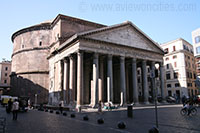
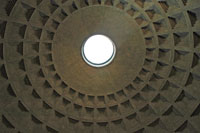
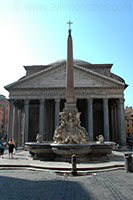

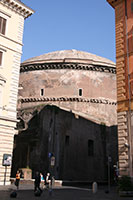
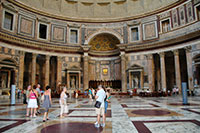



 ALBERGO DEL SOLE AL PANTHEON
ALBERGO DEL SOLE AL PANTHEON![Ingresso dalla Piazza [W] [HP]](http://www.hotelromeaccomodation.com/backoffice/ownimage/res_1201687600_Img02.jpg)
![HALL [W] [HP]](http://www.hotelromeaccomodation.com/backoffice/ownimage/res_1205247080_cardinal_45.jpg)
![SALOTTO HALL AR [HP] [W]](http://www.hotelromeaccomodation.com/backoffice/ownimage/res_1246470632_salotto_hall_.jpg)
![CAMERA [HP] [W]](http://www.hotelromeaccomodation.com/backoffice/ownimage/res_1115132979_camera.jpg)
![CAMERA STANDARD [HP]](http://www.hotelromeaccomodation.com/backoffice/ownimage/res_1164639581_31._Camera_standard_3.jpg)
![Camera Twin [HP] [W]](http://www.hotelromeaccomodation.com/backoffice/ownimage/res_1192809647_camere3.jpg)
![[W][HP]](http://www.hotelromeaccomodation.com/ownimage/res_1255619091_parkhoteldeimassimi_001.jpg)
![[W][HP]](http://www.hotelromeaccomodation.com/ownimage/res_1255621286_r_triple.jpg)
![[HP]](http://www.hotelromeaccomodation.com/ownimage/res_1227825764_imgok.jpg)